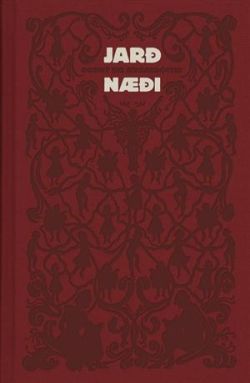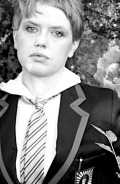Plan of Ruins
“I believe that all lives can yield interesting stories. It isn't necessarily so important to remember school grades or calendar dates correctly, but much rather to try, in some way, to mediate the truth of each life,” says author Oddný Eir Ævarsdóttir in an interview on her newest book, Plan of Ruins.

“I believe that all lives can yield interesting stories. It isn't necessarily so important to remember school grades or calendar dates correctly, but much rather to try, in some way, to mediate the truth of each life,” says author Oddný Eir Ævarsdóttir in an interview on her newest book, Plan of Ruins (orig. Jarðnæði).
Taking the form of a fictionalized journal, Plan of Ruins describes a sort of pilgrimage across Iceland and Europe in search of a place of refuge – a permanent haven offering a balance between the needs of family and self. During her journey, the narrator tries to familiarize herself with the country's nature, her own ancestors, and along the way, herself.
In keeping with Oddný Eir's previous works, Plan of Ruins blurs the line between autobiography and fiction, narrator and author. This persistent characteristic has led to comparisons between Oddný Eir's work and the autobiographical fiction of Þórbergur Þórðarsons – at once one of Iceland's most eccentric and prodigiously gifted 20th century writers.
The playful and reflective Plan of Ruins seems set to perpetuate such comparison. The work attracted universal critical praise on publication, and nominations for The Icelandic Literary Prize and the Icelandic Women's Literature Prize followed. Neither prize had yet been awarded at the time of the following interview.
Discovering the tail... and learning to wag it

“The igniting spark was probably a line from Heidegger's 'Letter on Humanism,'” Oddný Eir says of the work's inception. “The one saying that “'language is the house of Being.' I had underlined that sentence very empathically, and filled the margin with exclamation marks. When I ran across it a few years later, I wondered what he had meant, and what all those exclamation marks of mine were about.”
Your book's spine has the word “journal” printed on it, and the work's form is consistent with this. Are you still playing with the boundaries between autobiography and fiction?
“I'm fond of the personal journal as a literary form, and I wanted to attempt a novel in that vein, just as I have kept a journal since I was a child. I wanted to harness that same enthusiasm. So yes, I'm still playing with those boundaries. I still find them exciting, and I enjoy stretching the form of the novel as far as I can.”
In your previous work, Home to My Heart, you describe the inner journey of the narrator through her past and youth, and the necessity of “resetting” oneself regularly. In Plan of Ruins, you relate the search for a place to stay – a “room of one's own” that also serves as a place to meet friends and family. Is this also a search for some kind of point zero?
“Yes, that's a pleasing comparison. The grounding, or connection to the earth, described in Plan of Ruins probably has parallels to the “resetting” mentioned in the other book. In fact, all of my three books reflect on this putting down of roots, the location of one's roots, one's tail; I'm discovering the tail and learning to wag it. We're living through a renaissance period. We've arrived at point zero in so many fields simultaneously, and must rethink everything from scratch. To me, this is at once a personal and social challenge.”
Speaking of social challenges: In recent years you have been a vocal advocate of protecting the environment, and your book, personal as it is, also raises questions about the relationship between man and nature.
“Yes, in this book I write about cycles: cycles of seasons and lifespans, and cycles of thoughts and feelings. How we fit into this ongoing cycle, and our responsibility towards it. Nature is good at teaching humility, because by learning about its cycles we also learn much about ourselves and can replenish the world's sense of equity. I think there is a strong bond between nature, love and equity. I have, to be sure, come into contact with nature through environmental work, but also through the works of musicians and artists, as well as through travel.”
“It is embarrassing to believe anyone to be truly interested in what's on one's mind,” says the book's narrator. Do you feel you're going out on a limb yourself by publishing this type of work? Significantly, the French writer Michel Leiris – who authored radical autobiography and maintained that any such writing must by necessity entail some risk – makes an appearance near the end of your book.
“The spirit of Michel Leiris is always close to me, and I find it very interesting to keep on exploring what this risk he mentions consists of. When writing on subjects this close to your personal life and nearest circle, for example, you risk all sorts of things. After all, most writers of memoirs or autobiography believe themselves to have triumphed in life in one way or another. Well, I don't consider myself to have won any victories, and I don't think of my life, or the lives of those around me, as exceptionally interesting. I believe that all lives are interesting, and that getting through the day without major catastrophe is a triumph all in itself. I believe that all lives can yield interesting stories. It isn't necessarily so important to remember school grades or calendar dates correctly, but much rather to try, in some way, to mediate the truth of each life. I think that my challenge in life has primarily to do with fiction and truth.”
Interview: Davíð K. Gestsson
English translation: Steingrímur Teague
